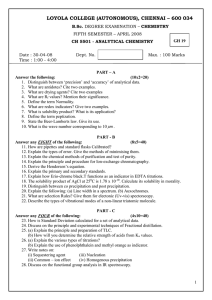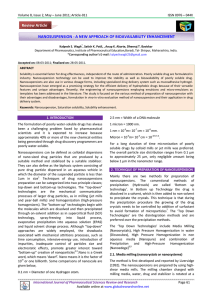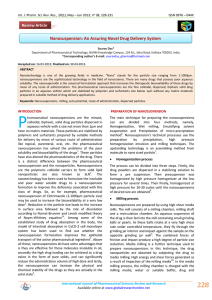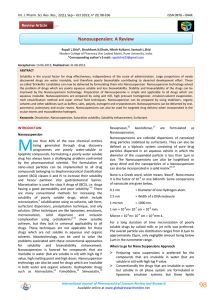Dr. Sheena M. Reeves Assistant Professor Department of Chemical Engineering
advertisement
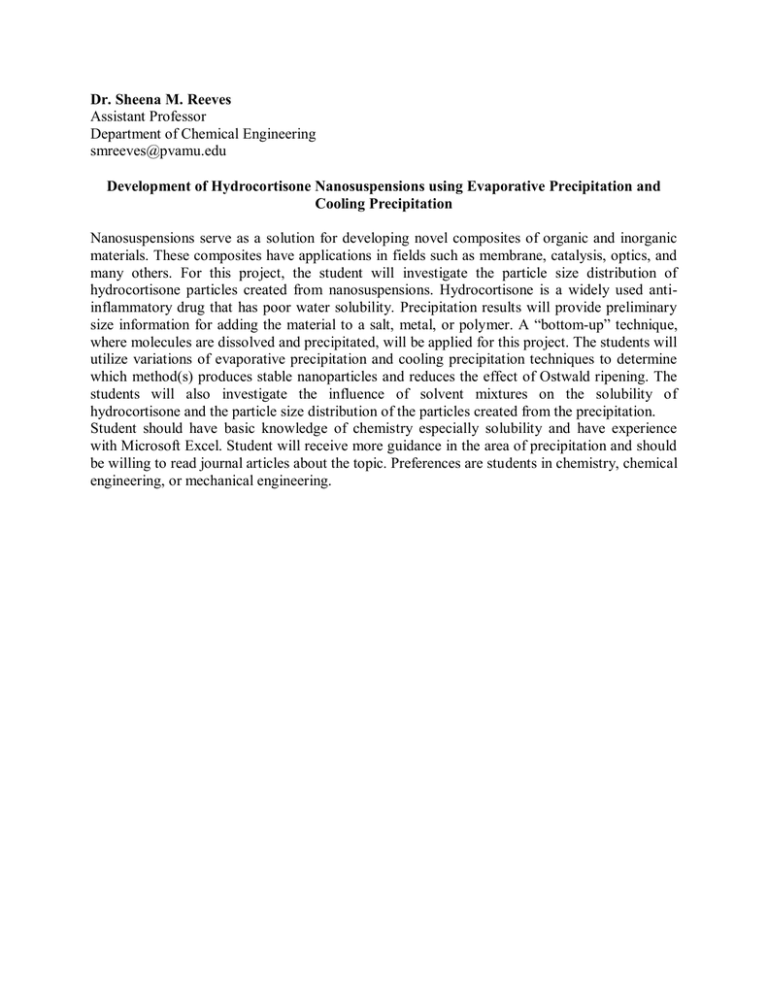
Dr. Sheena M. Reeves Assistant Professor Department of Chemical Engineering smreeves@pvamu.edu Development of Hydrocortisone Nanosuspensions using Evaporative Precipitation and Cooling Precipitation Nanosuspensions serve as a solution for developing novel composites of organic and inorganic materials. These composites have applications in fields such as membrane, catalysis, optics, and many others. For this project, the student will investigate the particle size distribution of hydrocortisone particles created from nanosuspensions. Hydrocortisone is a widely used antiinflammatory drug that has poor water solubility. Precipitation results will provide preliminary size information for adding the material to a salt, metal, or polymer. A “bottom-up” technique, where molecules are dissolved and precipitated, will be applied for this project. The students will utilize variations of evaporative precipitation and cooling precipitation techniques to determine which method(s) produces stable nanoparticles and reduces the effect of Ostwald ripening. The students will also investigate the influence of solvent mixtures on the solubility of hydrocortisone and the particle size distribution of the particles created from the precipitation. Student should have basic knowledge of chemistry especially solubility and have experience with Microsoft Excel. Student will receive more guidance in the area of precipitation and should be willing to read journal articles about the topic. Preferences are students in chemistry, chemical engineering, or mechanical engineering.
